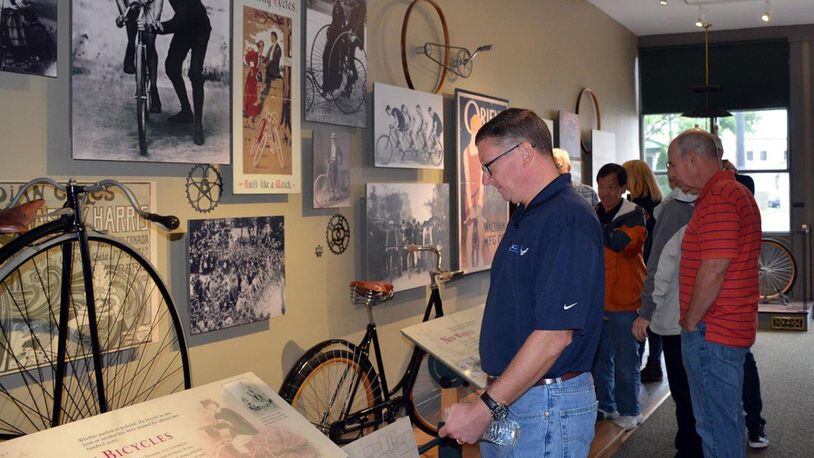“History is a valuable tool in the scientific method,” said Tony Sculimbrene, executive director of the National Aviation Heritage Alliance, who helped facilitate the day’s activities. “You have to understand what was done in the past to be a successful scientist or engineer of the future.”
The AFRL Materials and Manufacturing Directorate traces its history back to 1917 McCook Field, where the Materials Section of the Engineering Division focused on developing and designing new materials for aircraft as well as instrumentation and parts, to enable the United States to be technologically competitive with Europe as it entered World War I. Prior to this, the Wright brothers had conducted early flight tests at McCook Field and later trained Gen. Henry Arnold, the first chief of staff of the Air Force, how to fly, essentially tying the history of the lab to the original days of aviation technology.
These direct connections of the directorate to Dayton’s Aviation History made a tour of the historical sites that much more significant for the group.
“There’s so much history and aviation heritage here in Dayton,” said Mary Shelly, an emergency planning coordinator at the directorate and member of the centennial planning team, who led the efforts to arrange the tour. “There’s a spirit of innovation all around us, and we wanted to bridge that connection with AFRL, where our scientists and engineers innovate every day.”
The day began with a visit to the Wright Cycle Company Complex, which included a stop at the original site of the Wright brothers’ bicycle shop where Wilbur and Orville Wright developed the mechanical and engineering expertise that they later used to develop the first powered aircraft for human flight. This was followed by a unique tour of the Wright Company Factory, the oldest aircraft manufacturing facility in the world. Established in 1910, it built 120 airplanes over the next 40 years, helping to establish Dayton’s original aerospace industry at a time where automobile use was still in its infancy.
“People would come to work by horse and buggy to build airplanes,” said Tim Gaffney, the director of communications at NAHA, who guided the group through the facility. “It was unique to have a facility manufacturing flight when ground transportation was still a challenge for many.”
The group then took a driving tour through the Wright-Dunbar neighborhood, glimpsing the site of Orville’s original laboratory before arriving at Dayton’s Carillon Park to see the original 1905 Wright Flyer III on display, significant in its recognition as the first practical airplane but more so for the innovative spirit that drove the Wright brothers’ determination to see flight succeed.
“The Wright brothers were successful through trial and error, and they never gave up. It’s that same innovative spirit that drives our work at AFRL today,” said Shelly.
Following a stop at the Wright brothers’ family mansion and a visit to the well-marked grave sites of aviation’s forefathers, the group arrived at McCook Field, where discussions focused on the evolution of military aviation research and development at the site during the early days of the materials lab.
“Within 44 years we saw aviation evolve from the Wright Flyer to breaking the sound barrier,” said Sculimbrene. “A lot of that innovation occurred at McCook field during the early days. This was research in parachutes, high altitude flight, propeller testing and more, which AFRL has advanced today.”
To bring the tour full circle, the Aviation Heritage Tour ended at the new AFRL Wright Brothers Institute, located in the growing downtown Dayton innovation district, where today’s AFRL scientists and engineers carry on the Wright brothers’ legacy of innovation while working alongside business and industry entrepreneurs to accelerate the pace of technology for the future.
“Dayton was a huge area of innovation during the times of the Wright brothers, and we continue to help make sure it remains an innovation leader today and for the future,” said Shelly.
The Aviation Heritage Tour was supported by the National Aviation Heritage Alliance, which works to conserve and develop the historic resources of the National Aviation Heritage Area in central Ohio.
About the Author
